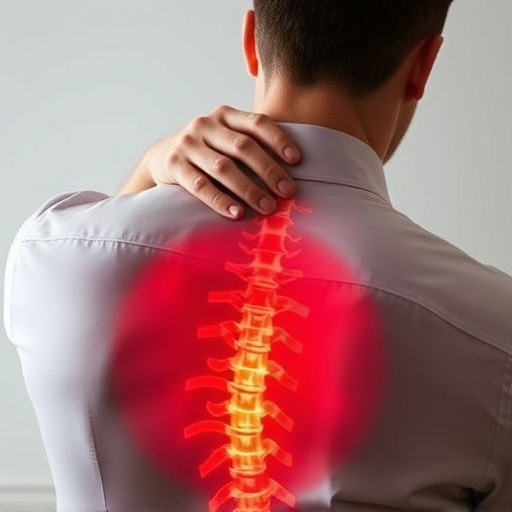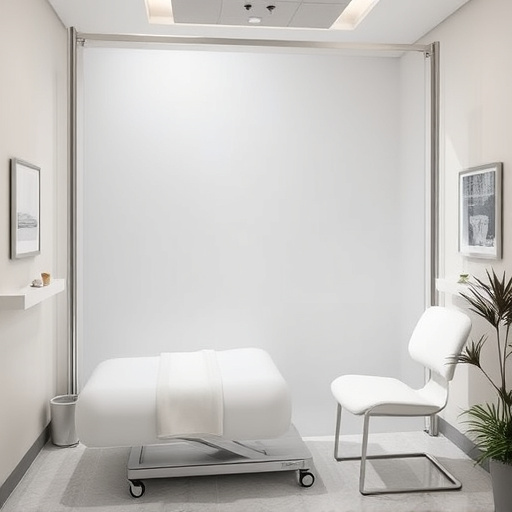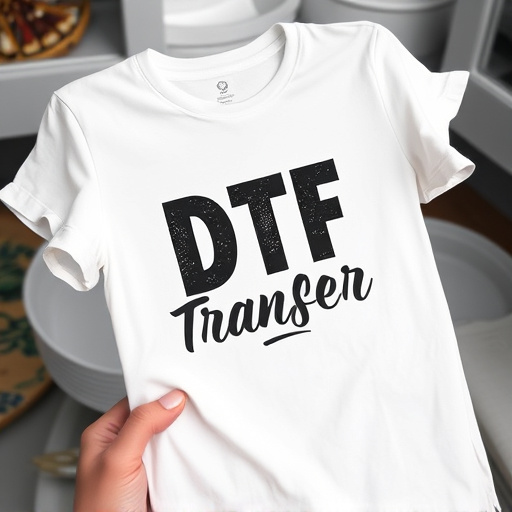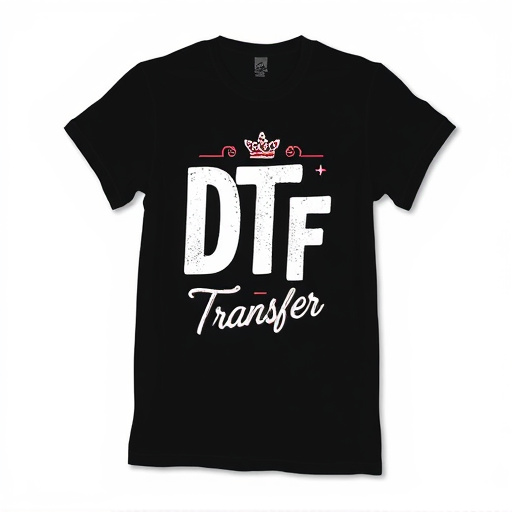Direct-to-Film (DTF) transfers create high-quality, long-lasting images for automotive wraps and ads. The process involves applying vinyl designs under high pressure, with adhesion relying on chemical reactions. Ideal adhesion times vary by film type and environmental conditions, requiring controlled temperatures (20-25°C) and humidity (40-60%). Proper substrate preparation, such as sanding or using a primer, enhances bonding. Common issues include improper surface prep, incompatible adhesives, and inadequate drying times; regular practice helps prevent these. Testing and Quality Assurance ensure durability under various conditions, including temperature, humidity, and UV exposure. For long-lasting adhesion, thoroughly clean the surface, use DTF-specific adhesives, and follow manufacturer guidelines.
Direct-to-film (DTF) transfers offer a versatile method for applying graphics to various surfaces. However, ensuring proper adhesion requires understanding the optimal duration for each step of the process. This article delves into the intricacies of the DTF transfer process, exploring factors influencing adhesion time, ideal conditions, common challenges, testing methods, and best practices to achieve long-lasting results. By mastering these aspects, you can enhance the effectiveness and longevity of your DTF applications.
- Understanding DTF Transfer Process
- Factors Influencing Adhesion Time
- Ideal Conditions for Optimal Adhesion
- Common Challenges and Their Solutions
- Testing and Quality Assurance
- Best Practices for Long-Lasting Adhesion
Understanding DTF Transfer Process
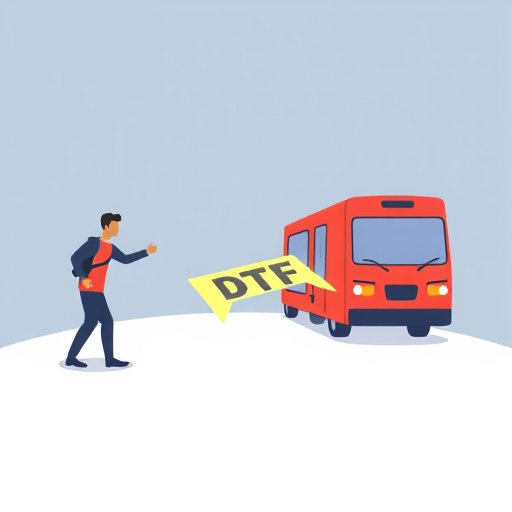
The Direct-to-Film (DTF) transfer process involves a precise application of a vinyl graphic design directly onto a film or video surface, creating a high-quality, long-lasting image. This method is increasingly popular for various applications, from automotive wraps to advertising billboards, due to its ability to reproduce vibrant colors and intricate details. The process begins with preparing the substrate, typically cleaning and priming the surface to ensure optimal adhesion. Then, a specialized machine applies the vinyl design under high pressure, melding it onto the film. This instant bonding is what allows for the transfer’s remarkable durability.
The key to ensuring proper adhesion lies in understanding the chemistry behind the bond. The vinyl material contains adhesive properties that react with the substrate’s surface, forming a strong connection. Different films and vinyl types may require specific preparation and curing times to achieve maximum bonding strength. Therefore, adhering to manufacturer guidelines for application and drying is crucial. Proper curing allows the transfer to set completely, resisting fading, cracking, or peeling over time, ensuring the image remains vibrant and intact.
Factors Influencing Adhesion Time

Several factors play a significant role in determining the ideal adhesion time for direct-to-film (DTF) transfers, ensuring long-lasting and high-quality results. One crucial aspect is the specific type of film used; different materials have varying adhesive properties, requiring precise timing to achieve optimal bonding. For instance, low-temperature or cold-laminated films may require a shorter adhesion period due to their less viscous adhesives, while high-performance, heat-activated films might demand extended contact time for effective bonding.
Environmental conditions also significantly influence adhesion duration. Temperature and humidity levels can affect the viscosity of the adhesive, impacting its ability to spread and create a strong bond with the substrate. Warmer temperatures generally enhance adhesive flow, but excessive heat or high humidity may degrade certain adhesives over time. Therefore, maintaining controlled environmental conditions during the transfer process is essential for achieving consistent adhesion times, ensuring the longevity of DTF applications in diverse settings.
Ideal Conditions for Optimal Adhesion

For optimal adhesion of a direct-to-film (DTF) transfer, it’s crucial to maintain ideal conditions throughout the application process. The surface upon which the transfer is applied should be clean, dry, and free from any contaminants like dust, grease, or previous adhesive residue. This ensures that the DTF film can securely bond with the substrate without any obstructions. A temperature range of 20-25°C (68-77°F) and relative humidity levels between 40-60% are recommended for best results. These environmental factors play a significant role in enhancing the adhesive properties of the transfer film, ensuring long-lasting durability.
Additionally, proper preparation of the substrate is key. This involves sanding or cleaning the surface to create a rough texture that allows the adhesive to grip firmly. Using a suitable primer can also improve adhesion, especially when applying the DTF transfer to materials like metal or plastics. Following these ideal conditions and techniques will significantly contribute to the long-term effectiveness and aesthetics of the final DTF transfer application.
Common Challenges and Their Solutions

Direct-to-film (DTF) transfers, while offering high-quality results, come with their share of challenges that can impact adhesion. Common issues include improper surface preparation, incompatible adhesives, and inadequate drying times. To overcome these hurdles, start by ensuring thorough cleaning and degreasing of the substrate to eliminate any contaminants that could disrupt adhesion. Choose an adhesive specifically formulated for DTF applications to guarantee compatibility and strength. Additionally, allow sufficient drying time according to the product’s instructions to ensure optimal bonding.
Another challenge lies in achieving consistent results across large areas or complex shapes. This can be addressed by using a smooth application method, such as a roller or brush, and maintaining even pressure during application. For intricate designs, consider using masking techniques to protect undisturbed areas while allowing adhesive to set on the desired sections. Regular practice and attention to detail are key to mastering these techniques for long-lasting DTF transfer adhesion.
Testing and Quality Assurance

Testing and Quality Assurance are essential steps in ensuring the long-term durability and proper adhesion of a Direct-to-Film (DTF) transfer. Before applying any DTF to a surface, it’s crucial to conduct thorough testing to validate the compatibility of the materials and verify the transfer’s adherence under various conditions. This involves subjecting the transfer to different environmental factors, such as temperature, humidity, and UV exposure, to mimic real-world scenarios. By doing so, manufacturers can identify potential issues like delamination, color fading, or reduced adhesion over time.
Quality Assurance procedures should include visual inspections, adhesive strength tests, and durability assessments. Visual checks ensure that the DTF transfer is free from defects, scratches, or bubbles. Adhesive strength testing measures how well the transfer bonds to the target surface, confirming its long-lasting hold. Durability assessments evaluate the transfer’s resistance to peeling, cracking, or fading after prolonged exposure, ensuring it maintains its integrity and aesthetic appeal over an extended period. These rigorous testing and quality control measures are vital to guaranteeing the superior performance and longevity of DTF transfers in various applications.
Best Practices for Long-Lasting Adhesion

To ensure long-lasting adhesion for direct-to-film (DTF) transfers, several best practices should be followed. First, preparing the surface is key; clean and decontaminate the area thoroughly to remove any grease, dust, or debris that could compromise the bond. This step is crucial for a strong and lasting connection between the transfer and the substrate.
Additionally, selecting the appropriate adhesive for your DTF transfer is essential. Different materials require specific adhesives designed to handle their unique properties. Using an incompatible adhesive can lead to premature failure and delamination. Always refer to manufacturer guidelines and choose adhesives formulated for longevity on film-based transfers.

